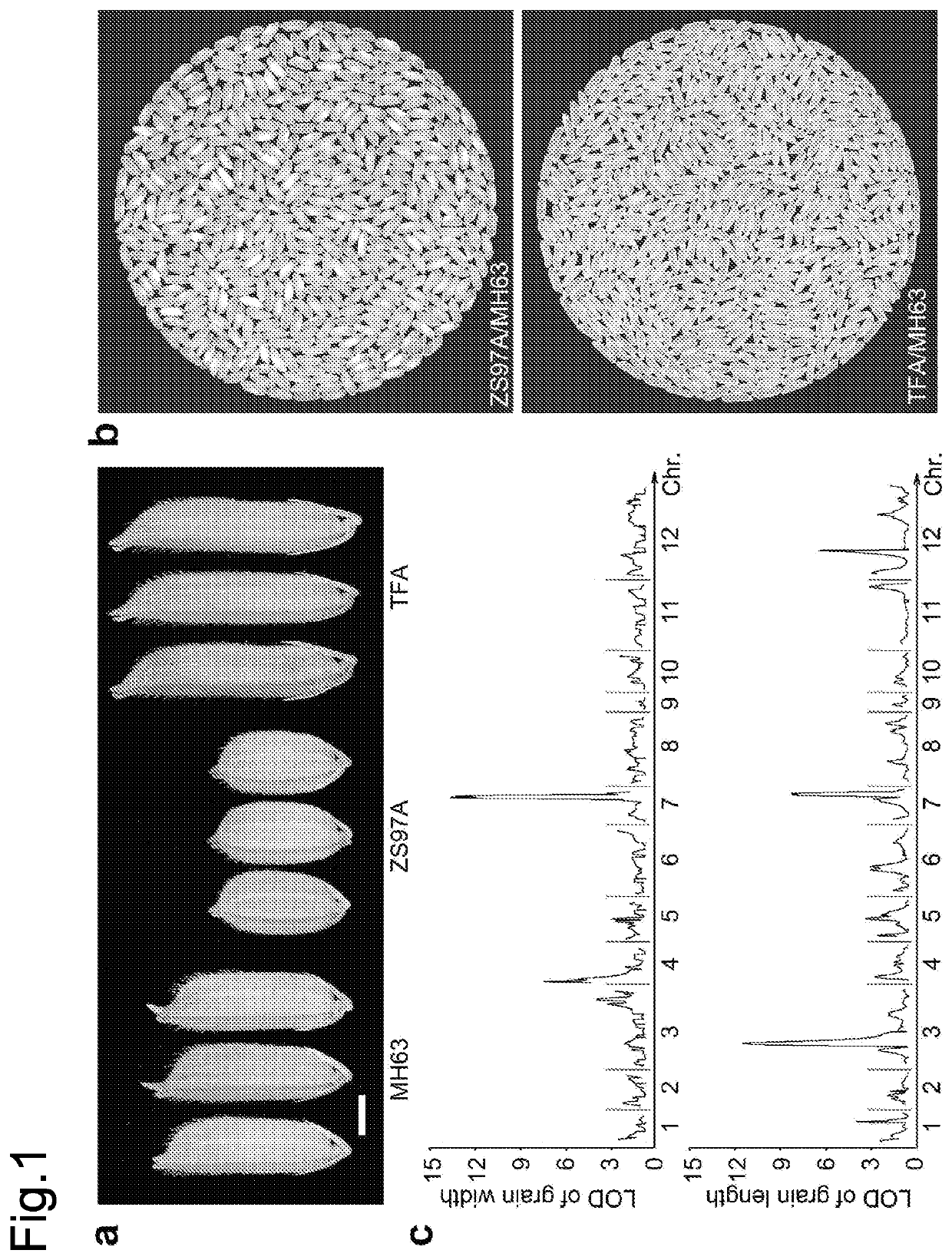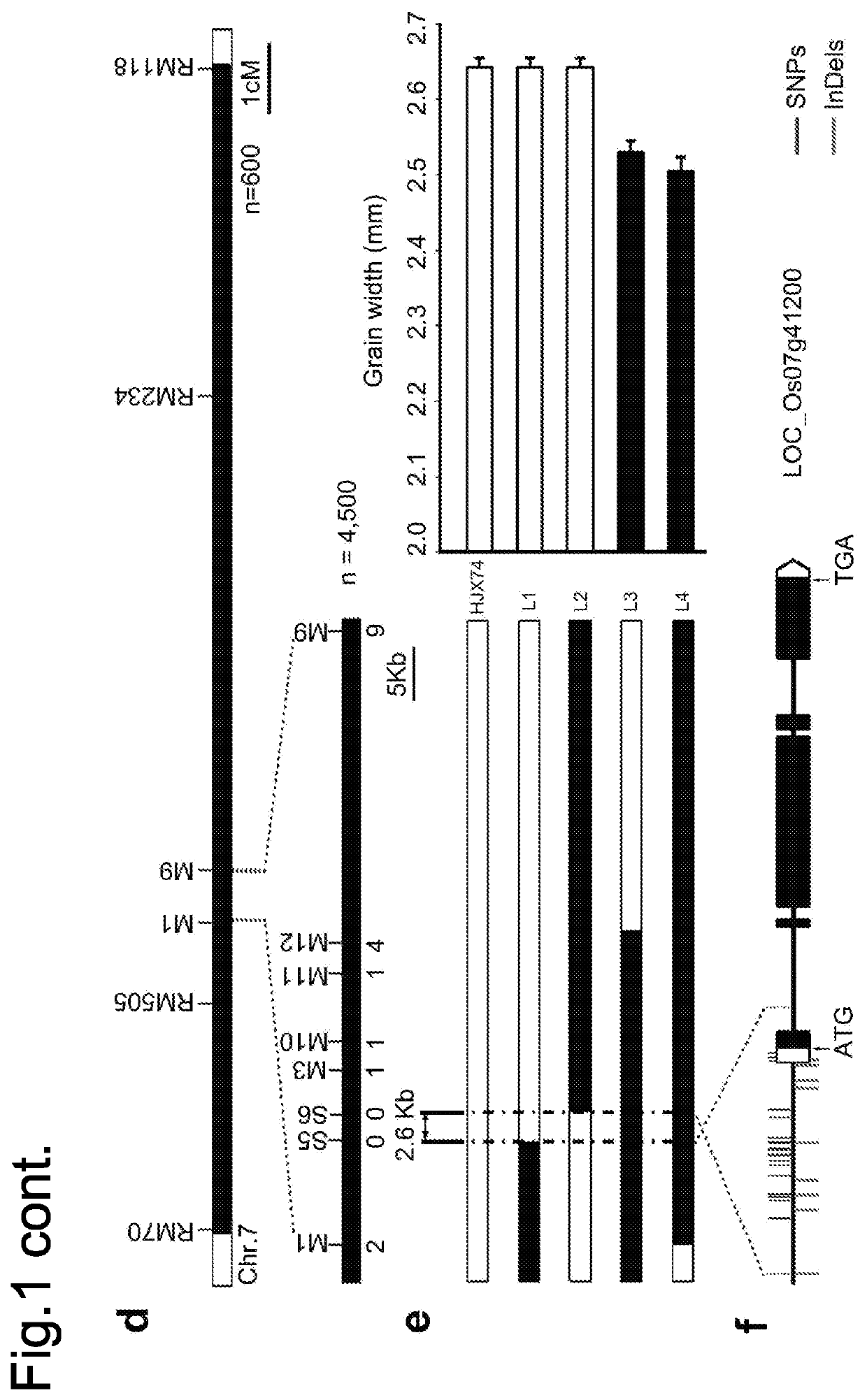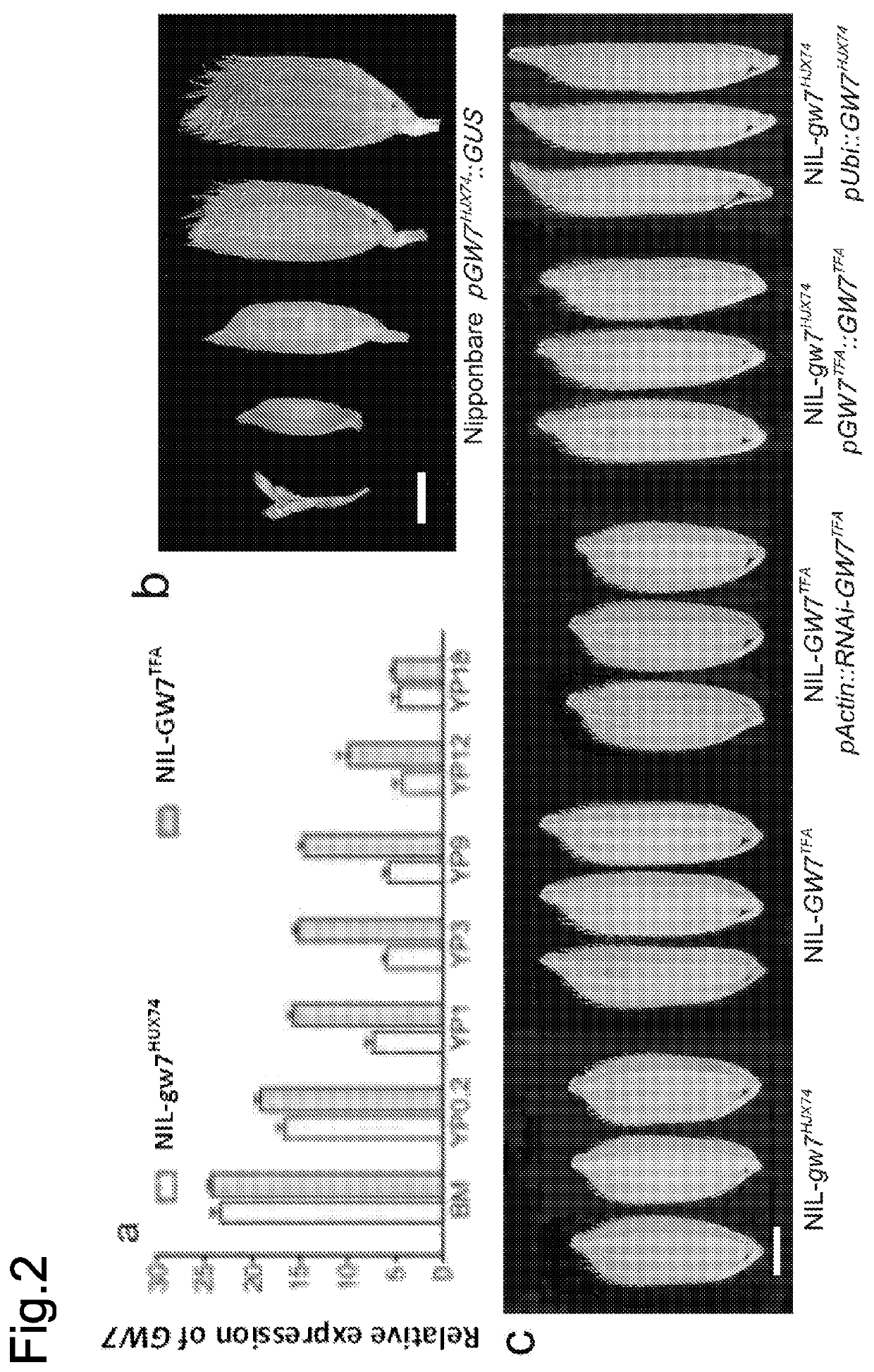Rice plants with altered seed phenotype and quality
a technology of seed phenotype and quality, applied in the field of plants with improved agricultural traits, can solve the problems of improving grain quality and improving grain quality, and achieve the effects of reducing cell division, increasing cell division, and improving grain quality
- Summary
- Abstract
- Description
- Claims
- Application Information
AI Technical Summary
Benefits of technology
Problems solved by technology
Method used
Image
Examples
examples
Methods
[0224]Plant Materials and Growing Conditions.
[0225]The NIL-GW7TFA plants were generated by back-crossing the hybrid TFA×HJX74 and further six times with HJX74. Contrasting allelic combinations of the qGW7 and qGS3 loci were assembled in the HJX74 background using NIL-GS3-GW7TFA and NIL-gs3-gw7HJX74 plants12. Details of the germplasm used for the sequence diversity analysis have been described elsewhere12, 24. Field-grown NILs plants were raised in a rice paddy at an inter-plant spacing of 20 cm during the standard growing season at three experimental stations, located in Lingshui (Hainan Province), Hefei (Anhui Province) and Beijing. The primer sequences for the genotyping assays are provided in Table 6.
[0226]Positional Cloning of qGW7.
[0227]Fine-scale mapping of qGW7 was based on 4,500 BC3F2 plants bred from the backcross between TFA and an indica variety HJX74 (HJX74 as the recurrent parent). The genomic DNA sequence in the GW7 candidate region was compared between TFA and ...
PUM
| Property | Measurement | Unit |
|---|---|---|
| length | aaaaa | aaaaa |
| length | aaaaa | aaaaa |
| length | aaaaa | aaaaa |
Abstract
Description
Claims
Application Information
 Login to View More
Login to View More - R&D
- Intellectual Property
- Life Sciences
- Materials
- Tech Scout
- Unparalleled Data Quality
- Higher Quality Content
- 60% Fewer Hallucinations
Browse by: Latest US Patents, China's latest patents, Technical Efficacy Thesaurus, Application Domain, Technology Topic, Popular Technical Reports.
© 2025 PatSnap. All rights reserved.Legal|Privacy policy|Modern Slavery Act Transparency Statement|Sitemap|About US| Contact US: help@patsnap.com



